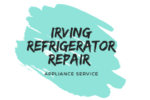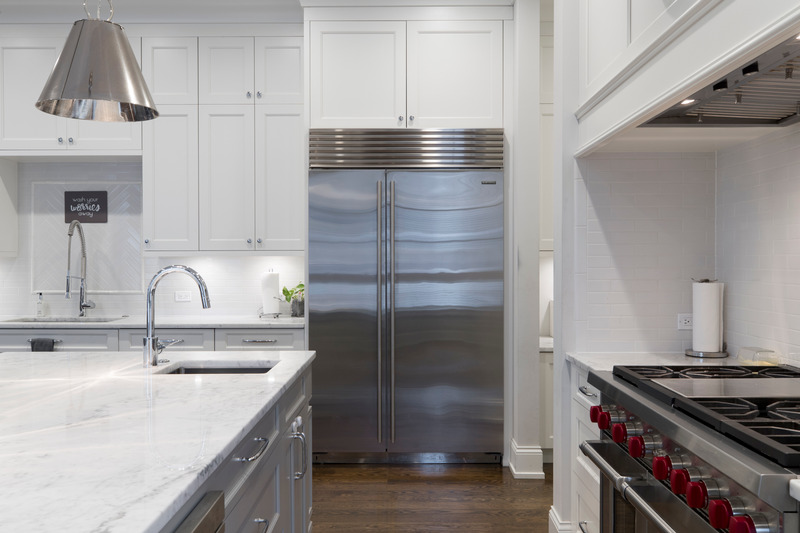An interesting article about Basic refrigerator repair and safety precautions. This is useful DIY appliance repair information. Excerpt from the book called “HOME REPAIR AND IMPROVEMENT” by “TIME LIFE BOOKS“.
SPECIAL TYPES OF REFRIGERATORS
A vast majority of the refrigerators built within the last 30-40 years (and thus most likely to still be in service) were built using the systems, however, there are a few exceptions:
HOT GAS DEFROST
Certain refrigerators use hot Freon circulated backwards through the evaporator to melt frost, rather than an electric heater. Though there are more recent models, these are generally built in the 1960’s and before and represent a very small minority of the domestic refrigerators still in service.
NOW SELF-DEFROSTERS
These units do not have a timer that initiates the defrost mode. Some must be initiated manually (usually there is an obvious defrost button) and some have no defrost at all—they must be unloaded, unplugged, and let defrost by themselves.
CHILL-TYPE REFRIGERATORS
These refrigerators have a very cold plate or coils (tubes) located near the top of the cold compartment. There is no evaporator fan and air circulates naturally. By convection, warm air rises to the top of the compartment where the coils are, and the cold air sinks towards the bottom.
There may be separate plates in the freezer and refrigerator sections. Often these refrigerators have no defrost systems; if they do, it’s usually a hot-gas defrost system. Most “micro-“ or “mini” fridges are chill-type. Most freezer (only) units have no evaporator fans. Generally these units have no condenser fan either; condenser air circulation is also by convection.
GAS REFRIGERATORS (AMMONIA SYSTEMS)
IF YOU HAVE A “GAS” REFRIGERATOR, NOTHING IN THIS BOOK APPLIES TO YOUR UNIT. It uses an entirely different operating system; it is NOT a vapor-compression-cycle unit. These are generally found in RV and yacht installations, where electricity is frequently unavailable for extended periods of time.
If you suspect that you may have any of these units, ask your appliance parts retailer or dealer to confirm your suspicions. With a make, a model number and perhaps a serial number, he should be able to tell you what you have.
BASIC REPAIR AND SAFETY PRECAUTIONS
- Always de-energize (pull the plug or trip the breaker on) any refrigerator that you’re disassembling. If you need to re-energize the refrigerator to perform a test, make sure any bare wires or terminals are taped or insulated. Energize the unit only long enough to perform whatever test you’re performing, then disconnect the power again.
- NEVER EVER chip or dig out ice from around the evaporator with a sharp instrument or knife. You WILL PROBABLY puncture the evaporator and you WILL PROBABLY end up buying a new refrigerator. Use hot water and/or a blow dryer to melt ice. If you use a blow dryer, take care not to get water in it and shock yourself. Better yet, if you have the time and patience, leave the fridge open for a few hours and let the ice melt naturally. You can remove large, loose chunks of ice in the evaporator compartment by hand, but make sure there aren’t any electrical wires frozen into the chunks of ice before you start pulling them.
- Always re-install any removed duck seal, heat shields, styrofoam insulation, or panels that you remove to access anything. They’re there for a reason.
- You may need to empty your fridge or freezer for an operation. If you do not have another fridge (or a friend with one) to keep your food in, you can generally get by with an ice chest or a card-board box insulated with towels for a short time. Never re-freeze meats; if they’ve already thawed, cook them and use them later.
- If the manual advocates replacing the part, REPLACE IT!! You might find, say, a fan motor that has stopped for no apparent reason. Sometimes you can flip it with your finger and get it going again. The key words here are apparent reason. There is a reason that it stopped—you can but on it—and if you get it going and re-install it, you are running a very high risk that it will stop again. There may be a hard spot in the bearings; or it may only act up when it is hot, or cold…there are a hundred different “what if’s”. Very few, if any, of the parts mentioned in this book will cost you over ten or twenty dollars. Don’t be penny-wise and dollar-dumb. Replace the part.
- Refrigerator defrost problems may take a week or more to reappear if you don’t fix the problem the first time. That’s how long it will take the evaporator to build up enough frost to block the airflow again. After fixing a defrost problem, keep an eye out for signs of a recurrence for at least a week. The sooner you catch it, the less ice you’ll have to melt.
- You may stop the compressor from running using the defrost timer or cold control, by cutting off the power to the fridge, or simply by pulling the plug out of the wall. However, if you try to restart it within a few minutes, it may not start; you will hear it buzzing and clicking. If the system has not had enough time for the pressure within to equalize, there will be too much back pressure in the system for the compressor motor to overcome when trying to start. This is nothing to be alarmed about. Simply remove the power from the compressor for a few more minutes until the compressor will restart.
- Do not lubricate any of the timers or motors mentioned in this manual. They are permanently self-lubricated. In a cold environment, oil will become more viscous and increase friction, rather than decrease it. If you have a sticky fan motor or time, replace it.
Continue Reading about “How to keep a Refrigerator cool but frost-free?”


